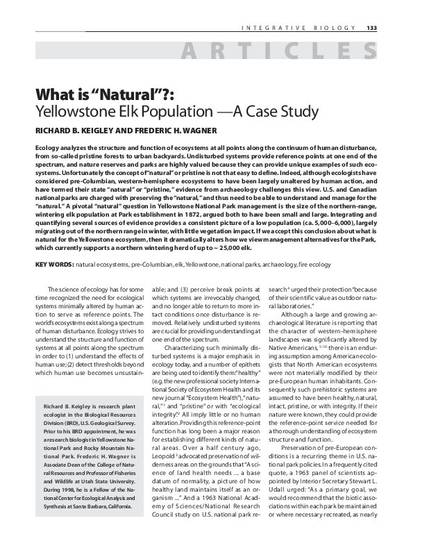
Article
naturalelk.pdf
Integrative Biology
(1998)
Abstract
Ecology analyzes the structure and function of ecosystems at all points along the continuum of human disturbance, from so‐called pristine forests to urban backyards. Undisturbed systems provide reference points at one end of the spectrum, and nature reserves and parks are highly valued because they can provide unique examples of such ecosystems. Unfortunately the concept of “natural” or pristine is not that easy to define. Indeed, although ecologists have considered pre‐Columbian, western‐hemisphere ecosystems to have been largely unaltered by human action, and have termed their state “natural” or “pristine,” evidence from archaeology challenges this view. U.S. and Canadian national parks are charged with preserving the “natural,” and thus need to be able to understand and manage for the “natural.” A pivotal “natural” question in Yellowstone National Park management is the size of the northern‐range, wintering elk population at Park establishment in 1872, argued both to have been small and large. Integrating and quantifying several sources of evidence provides a consistent picture of a low population (ca. 5,000–6,000), largely migrating out of the northern range in winter, with little vegetation impact. If we accept this conclusion about what is natural for the Yellowstone ecosystem, then it dramatically alters how we view management alternatives for the Park, which currently supports a northern wintering herd of up to ˜ 25,000 elk.
Disciplines
Publication Date
1998
DOI
https://doi.org/10.1002/(SICI)1520-6602(1998)1:4%3C133::AID-INBI3%3E3.0.CO;2-U
Citation Information
Frederic H. Wagner. "naturalelk.pdf" Integrative Biology Vol. 1 Iss. 4 (1998) p. 133 - 148 Available at: http://works.bepress.com/frederic_wagner/88/
